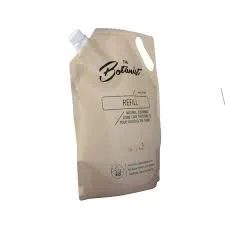Understanding the Basics of Offset Lithography and Its Printing Process
Understanding Offset Lithography A Key Printing Technique
Offset lithography is a widely used printing technique that has revolutionized the way we produce images and texts on a variety of materials. Its significance lies in its ability to deliver high-quality prints efficiently and cost-effectively, making it the preferred choice for commercial printing businesses around the world.
What is Offset Lithography?
At its core, offset lithography is based on the principle of oil and water repulsion. The term offset refers to the way the ink is transferred from the printing plate to an intermediate roller and then onto the printing substrate, such as paper. This process eliminates direct contact between the plate and the paper, which helps in producing clearer images and more precise text.
The process begins with the creation of a printing plate made of metal or polyester. Images and text are transferred onto the plate using a chemical process that ensures that the areas to be printed attract ink while the non-image areas repel it. Once the plate is prepared, it is mounted onto the printing press where a series of rollers apply ink and water. This ensures that the ink adheres only to the areas of the plate meant to print, while the rest remains ink-free due to its affinity for water.
The Printing Process
1. Pre-Press Preparation This initial stage involves designing the artwork and producing the plates. Digital files are commonly used, which streamlines the workflow and minimizes errors. The design is then exposed onto the plate through a laser imaging process.
2. Inking The prepared plate is placed onto the press, where it is moistened with water. The ink is then applied, and as the plate turns, it transfers the ink onto a rubber blanket roller. This rubber blanket takes on the image before it is transferred to the paper.
what is an offset lithograph

3. Printing The final step involves rolling the paper through the press, where the inked image is transferred from the rubber blanket to the paper. This offset method ensures that prints are sharp and detailed, free from blemishes often caused by direct plate-to-paper contact.
Advantages of Offset Lithography
One of the primary benefits of offset lithography is its exceptional print quality. The process allows for fine details and vibrant colors, making it ideal for printing high-quality images such as photographs, brochures, and magazines.
Additionally, offset lithography is highly cost-effective for large print runs. The setup cost is higher than that of other printing methods, but once in motion, it produces prints at a rapid speed and lower cost per unit. This makes it an economical choice for businesses looking to print thousands of copies.
Another advantage is versatility. Offset lithography can print on a wide range of substrates, not just paper. Materials such as cardboard, plastic, and metal can also be used, allowing for various applications, from packaging to publications.
Conclusion
Offset lithography remains one of the most reliable and efficient printing techniques in the industry today. With its roots in the simple principles of chemistry, it continues to evolve, integrating advanced technologies that enhance its capabilities. From magazines to posters, this process has made a significant impact on how we share information and ideas, ensuring that quality and consistency remain at the forefront of print production. As industries advance, offset lithography will likely continue to adapt, maintaining its vital role in the world of print media.













